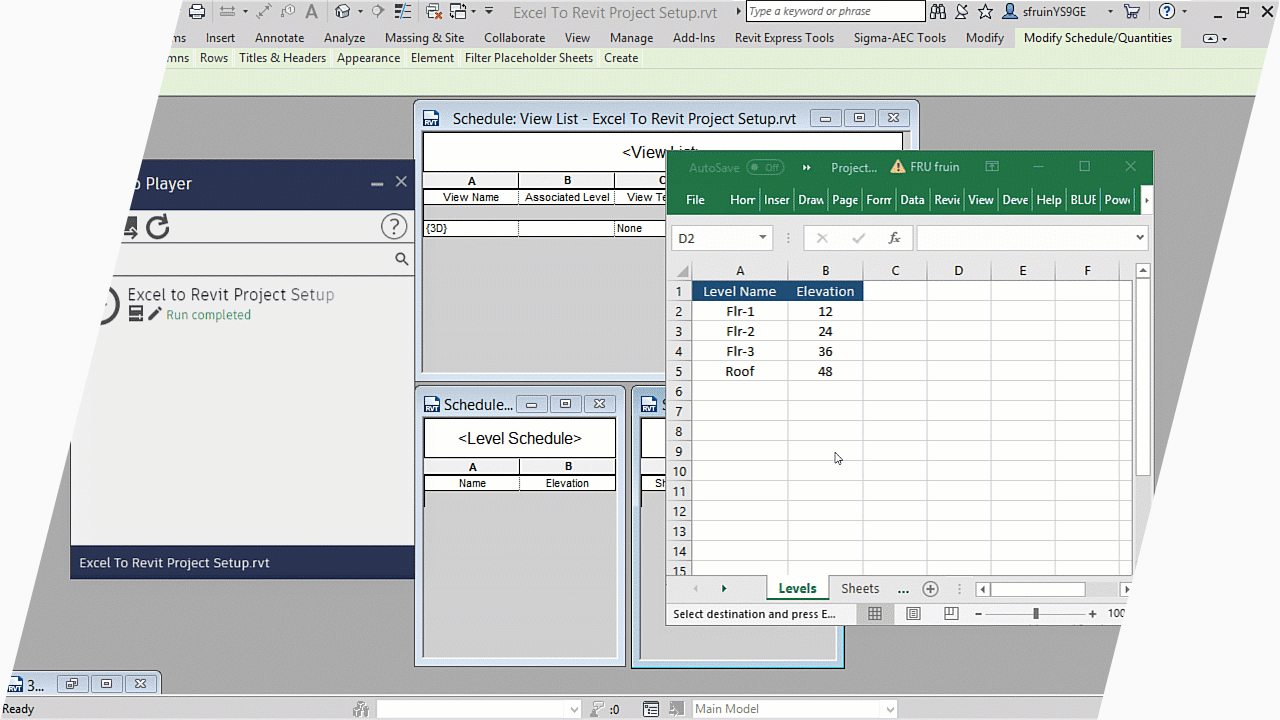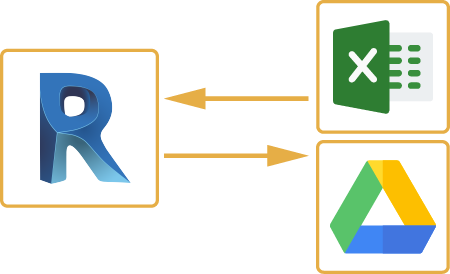Import Excel into Revit: Improving Your Operations
Wiki Article
Damaging Barriers: Excel Importation Techniques for Advanced Revit Users
Check out numerous data importation methods and master Excel integration to enhance your Revit modeling capabilities. With our methods and tips, you can get over importation obstacles and become a real specialist in utilizing Excel for your Revit jobs.Advanced Revit Users: Leveraging Excel for Importation
You can easily take advantage of Excel for importation as an innovative Revit customer. Excel is an effective tool that can substantially improve your process and performance in Revit. With its capability to manage huge amounts of data and do complicated estimations, Excel can be a valuable asset in handling and organizing your task information.One way to leverage Excel for importation is by utilizing the "Link Excel" function in Revit. This function allows you to connect an Excel spread sheet straight right into your Revit project, allowing you to upgrade and synchronize information between the two programs. This can be particularly beneficial when managing timetables or tracking modifications in your project.
One more method to use Excel is by utilizing the "Import/Export" attribute in Revit. This feature permits you to import and export data in between Revit and Excel, providing you the versatility to collaborate with information in both programs. You can import data from Excel right into Revit to produce elements such as walls, rooms, or doors, and you can also export information from Revit to Excel for additional analysis or reporting.

Exploring Data Importation Methods in Revit Utilizing Excel
Checking out exactly how to import data from Excel right into Revit uses reliable approaches for integrating info. When you import information from Excel, you can perfectly transfer information such as room timetables, material listings, and tools data into your Revit task. This procedure permits you to save time and effort by avoiding manual data entrance.To import data from Excel into Revit, you can use the "Import/Export" function. This function allows you to map the Excel data fields to the equivalent Revit specifications, guaranteeing that the information is appropriately appointed within the model. By selecting the appropriate import choices, you can control exactly how the data is imported and just how it interacts with your task.
An additional method for importing information from Excel into Revit is by making use of Dynamo. With Eager beaver, you can produce custom manuscripts that import data from Excel and manipulate it within your Revit task.
Mastering Excel Assimilation for Advanced Revit Modeling
One vital method is importing data from Excel spread sheets directly into your Revit model. With a couple of straightforward actions, you can map the Excel columns to the matching Revit criteria and import the information accurately.One more helpful method is exporting information from Revit to Excel. This enables you to extract information from your model, such as schedules or product amounts, and examine it in Excel using solutions, charts, or various other powerful tools. By leveraging the capacities of Excel, you can execute complicated calculations, create custom records, and gain important insights into your job.
Along with data transfer, Excel integration can automate repeated jobs in Revit. By developing macros or manuscripts in Excel, you can automate processes like producing sights, producing sheets, or using standard families - revit tool. This not only conserves time yet additionally ensures uniformity throughout your job
To master Excel integration in Revit, it is vital to understand the data framework and just how Revit connects with Excel. By familiarizing yourself with the offered devices and strategies, you can open the full possibility of Excel integration and take your Revit modeling to the next level.
Conquering Importation Obstacles: Excel Techniques for Revit Experts
When getting rid of importation difficulties, it's vital to be acquainted with efficient Excel methods that can profit professionals in Revit. As an innovative Revit customer, you comprehend the value of perfectly importing information from Excel into your tasks.
Website An additional helpful strategy is making use of the "Transpose" function in Excel. This permits you to transform data from rows to columns or vice versa. When importing information into Revit, this can be specifically helpful when you have data in a vertical pop over to this web-site style in Excel, however you require it to be in a straight layout in Revit.
Furthermore, making use of Excel formulas such as VLOOKUP and INDEX-MATCH can substantially help in mapping data from Excel to Revit. These solutions permit you to look for specific worths in Excel and retrieve corresponding information from an additional column. When importing large datasets into Revit., this can save you time and initiative.
Excel Data Importation Tips and Tricks for Advanced Revit Users
By familiarizing yourself with effective Excel tricks and suggestions, you can improve your information importation procedure as an advanced user of Revit. Furthermore, making use of Excel's "Paste Special" feature permits you to paste data from Excel right into Revit while maintaining formatting, such as cell shade or font design. An additional handy method is to utilize Excel's "Replace and find" feature to quickly make changes to your information prior to importing it into Revit.
Conclusion
You have actually now found out useful techniques for importing information from Excel into Revit as an advanced customer. Go ahead, damage those obstacles and stand out in your Revit tasks!
When importing data right into Revit, this can be particularly practical when you have information in an upright format in Excel, but you need it to be in a horizontal layout in Revit.
Additionally, using Excel formulas such as VLOOKUP and INDEX-MATCH can significantly help in mapping information from Excel to Revit. Additionally, using index Excel's "Paste Special" attribute permits you to paste information from Excel right into Revit while maintaining formatting, such as cell color or font style.
Report this wiki page